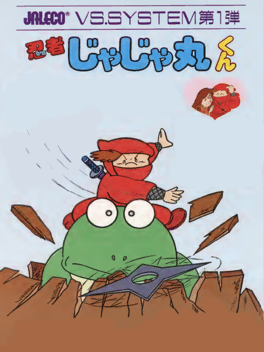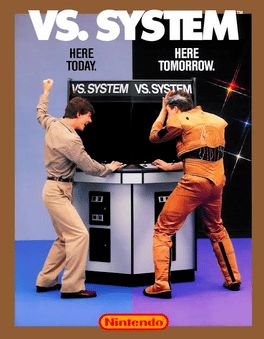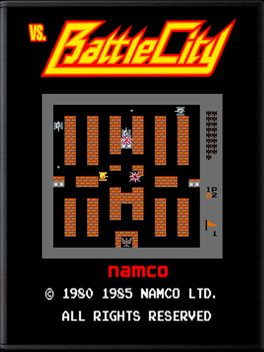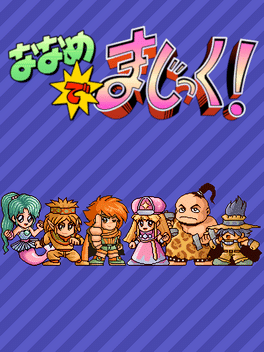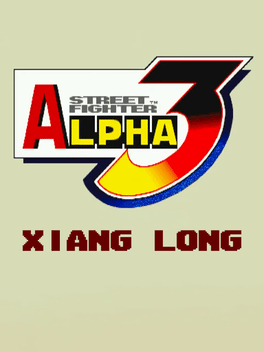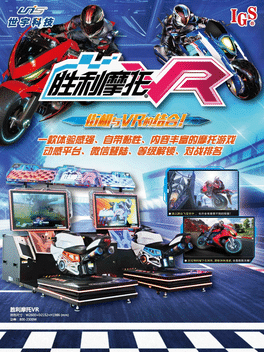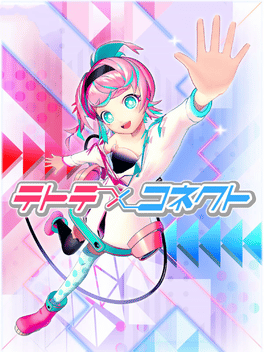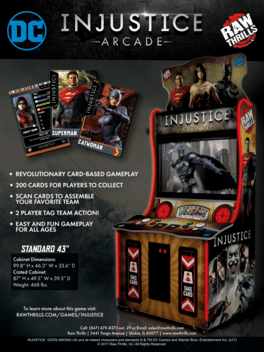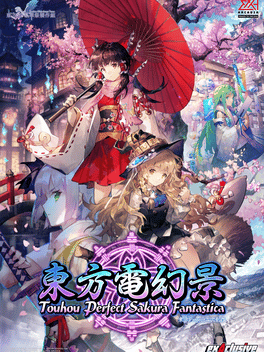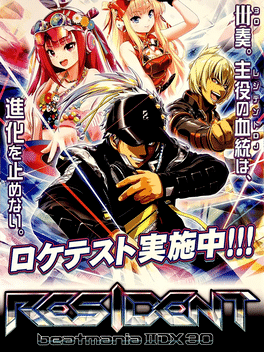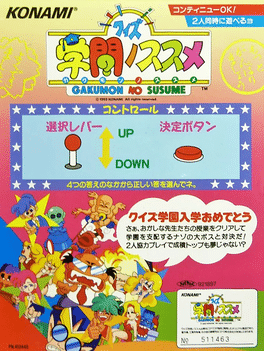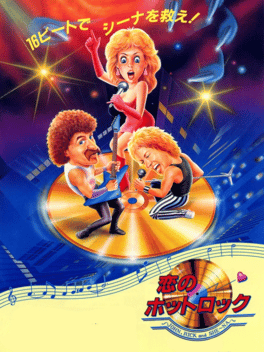Most Popular Arcade Games - Page 43
-
Vs. Babel no Tou
1986
-
Vs. Super Chinese
1986
-
Vs. Gradius
1986
-
Vs. Star Luster
1985
-
Vs. Battle City
1985
-
Chameleon
1983
Chameleon
1983
A colorful platform game in which the player controls a long-tongued chameleon that must make around a series of single-screen, platform-strewn levels; stealing chicken eggs from their nests and being careful to avoid contact with angry chickens. As well as walking along the platforms and poles, the chameleon can use its tongue to pull itself up to higher platforms; and to escape from any nearby chickens. Each level also has a number of bombs placed at various points; the chameleon can hit these with its tongue to send them crashing towards nearby chickens. The player must keep an eye out for projectiles thrown by the chickens, such as flashing eggs. If the nesting eggs are left for too long, they will hatch into a baby chick. The player can eat the chick for bonus points, but if the chick is left alone for too long, it will grow into an adult chicken and start attacking the player. A level is over once all of the eggs have been collected and all of the chickens killed. -
Kung-Fu Master
1984
Kung-Fu Master
1984
The international version of Spartan X, without the Jackie Chan movie license. Kung-Fu Master, known in Japan as Spartan X, is a 1984 beat 'em up arcade game developed and published in Japan by Irem. It was later published in North America by Data East. The Japanese version was based on the Jackie Chan movie Wheels on Meals, known as Spartan X in Japan, and credited "Paragon Films Ltd., Towa Promotion", who produced the film upon which it was based. The game is considered by many to be the first beat 'em up video game, and contains elements of Bruce Lee's Game of Death. -
Naname de Magic!
1994
-
Street Fighter Alpha 3: Xiang Long
2009
A mod that changes the property of a lot of moves such as reversals and projectiles, making them resemble the xiang long hack from Street Fighter 2. -
Ultra Moto VR
2019
Ultra Moto VR
2019
Ultra Moto VR takes fantasy motorbike racing to a whole new level with immersive game play, realistic graphics displayed on 43” LCD and numerous high-octane racetracks. Get ready for an adrenaline-pumping ride that brings the thrill of realistic racing to life in a virtual environment. -
Tetote x Connect
2021
Tetote x Connect
2021
Tetote x Connect is an arcade rhythm game released by Taito. The game features a touch-screen interface, where players tap on the screen and follow the movements of their partner to dance to the rhythm! Players can customize their partners in a variety of accessories, and also play to numerous songs from anime, artists, and labels such as Sega, Vocaloid, anime openings, and many more! -
Injustice Arcade
2017
-
Touhou Perfect Sakura Fantastica
2022
Touhou Perfect Sakura Fantastica brings the extremely popular Touhou series to arcades worldwide in a spectacular remake of Perfect Cherry Blossom (Touhou Episode 7). Featuring 4 playable characters and multiple difficulty levels in the original story, discover the mystery behind the long winter in the side story and epilogue modes. -
Quiz Gakumon no Susume
1993
Quiz Gakumon no Susume is an arcade quiz game developed and published by Konami released on 1993 exclusively in Japan. -
Rock'n Rage
1986
Rock'n Rage
1986
Rock'n Rage is an action shooter developed and published by Konami and released on arcade platforms in 1986. The game is an action shooter game, the player plays as Rick or John and have to go through five mazed levels, each corresponding at one time era, Ancient Egypt, England during medieval times, France during revolution, Italy during roman era and Japan in modern days. Each of these levels concludes with a boss fight. Players start with guitars only as their weapons, but finding potions on the ground will allow them to expand greatly their range of action, such as shooting musicals notes to destroy the various enemies the game offers. -
Minecraft Dungeons Arcade
2021
Minecraft Dungeons Arcade is a 1-4 player co-op arcade machine adaptation of the Minecraft Dungeons game. For each paid play, the game issues a reusable physical card that can be scanned at the arcade machine for equipment and power-ups. -
Rhythm Tengoku
2007
Rhythm Tengoku
2007
Rhythm Tengoku was ported to the Sega NAOMI Arcade system, with higher-quality graphics and an exclusive new set of minigames.


